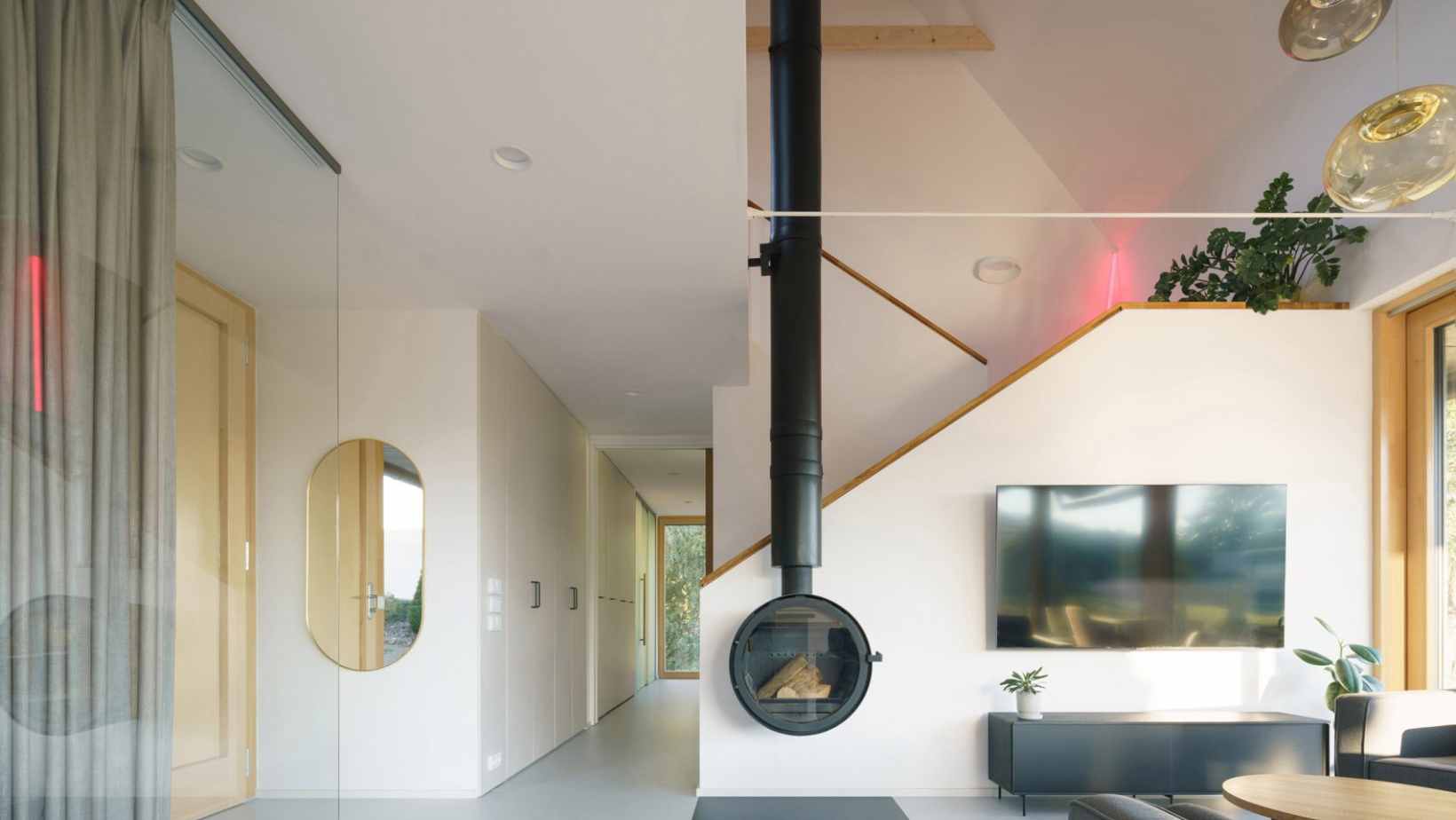This year’s Signal Festival will present 22 installations, 7 of them exclusively in the Gallery Zone.
Program and routes of Signal Festival
Signal Festival offers a very clear festival app that can be downloaded from the Apple Store and Google Play. The app includes the full program, an interactive map of the festival and other useful information.
Where can I buy tickets?
Online tickets can be purchased on the Signal Festival website or on our app. Tickets can also be purchased on site. Cash and credit cards are accepted at the festival.
Signal Festival is in the Prague Castle area!
This year’s festival is special because it takes visitors through the grounds of Prague Castle. In order for this experience to run smoothly and be safe for visitors, it is important to adhere to and respect the requirements from both Prague Castle and our festival organizators.
Passage through the Prague Castle grounds (the route Third Courtyard → Supreme Purcracy → Na Opyši street, towards the Old Castle Steps leading to Malostranská Street) will be open in both directions only until 10 pm. Visitors are advised to start the Hradčany route, after 10 pm, from the Prague Castle Riding Hall or from the Prague Castle tram stop.
The route between the Prague Castle Riding Hall and the Archbishop’s Palace via the Second Courtyard of Prague Castle will be open until 00:00. The flow of visitors will be separated in two directions, so we ask visitors to follow the organizer’s instructions.
The entrance to the Sternberg Palace for the Gallery zone installation by Jiří Příhoda is through the passageway of the Archbishop’s Palace.
How to get to the Festival?
The best way is by public transport. The starting point can be the Malostranská, Staroměstská and Karlovo náměstí metro stations.
You can also use the tram stops Pražský Hrad, Pohořelec or Staroměstská as a reference point. Please note: The Prague Castle closes at 22:00, i.e. it will not be possible to walk from the Old Castle Steps through the Third Courtyard to Hradčany Square.
If you want to get from Malostranská Street to the Hradčany route after 22:00, you can use, for example, the tram service to the Prague Castle stop.
Where can I find the festival map?
Just download our Signal Festival app. You can then conveniently view the map on your mobile phone, including the full program and all the necessary information about the festival. The festival map can be found on the lightpoints at each installation, on the route navigation or on our website in the programme section.
Would you like us to write about your business? Find out more
The Prague 1 district is preparing to negotiate with Prague’s city leadership to increase the tourist tax.
Currently, the law sets the maximum fee at 50 CZK (approximately €2) per person per night, but local officials believe this amount is inadequate.
The last increase in tourist tax came in 2021 when it rose from 21 CZK to 50 CZK per night due to a change in legislation. However, officials argue that this rate is still too low compared to other European cities.
Why the Current Fee Falls Short
According to a report from the district’s Finance Committee, in collaboration with Prague City Tourism, the average residence fee in EU cities is around €7 per night. This is three times higher than the current limit in Prague.
Representatives believe aligning with European standards will not only generate more income but also streamline fee collection, which is a key revenue source for Prague 1.
“This fee helps offset the costs of tourism. Visitors create waste, use local public transport, roads, and other services, all of which impact the city’s budget. Increasing the fee will provide more resources for maintaining cleanliness and improving city services,” said Giancarlo Lamberti (TOP 09), chairman of the Finance Committee and the proposal’s author.
Aligning with European Capitals
Deputy Mayor for Finance, Tomáš Heres (ODS), emphasized the need for an updated fee structure: “The current rate is no longer competitive with other European capitals. This fee plays a vital role in our district’s budget, especially as expenditure pressures rise. We must explore new revenue streams to maintain high service standards for our citizens and ensure continued investment in Prague 1.”
The district has already begun discussions with other authorities to not only raise the maximum rate but also consider a flexible fee system that would allow different districts to set their own limits. This flexibility would help address local conditions, although no district would be permitted to exceed the national legal cap.
Revenue Distribution Issues
Prague 1 officials are also unhappy with how the revenue from accommodation fees is split. Currently, all hotel-related fees go to the city’s central budget, while Prague 1 only collects fees from hostels and boarding houses, of which 25% must be handed over to the municipality. District officials want to either keep the entire amount or see 25% of hotel fees returned from the municipality.
“The proposed increase is crucial, especially given the strain tourism places on the city center. Tourists should contribute fairly to the cost of public services,” said Mayor Terezie Radoměřská (TOP 09).
Karel Grabein Procházka (ANO), Councilor for Regional Development, added, “This fee is vital for the sustainable development of our district. A higher rate will allow us to better manage tourism and ensure Prague 1 remains not just a tourist destination, but a livable community.”
In 2023, Prague collected 801 million CZK in residence fees, a year-on-year increase of 250 million CZK.
Of this amount, Prague 1 generated 262 million CZK. Additionally, the district itself collected 22 million CZK but was required to give 25% back to the central budget, explained Deputy Mayor David Bodeček (Independent/Pirates).
Would you like us to write about your business? Find out more
Czech President Petr Pavel swore in two new ministers on Tuesday as part of a reshuffle of the government following the decision of junior coalition partner, the Pirates, to leave the Cabinet.
Prime Minister Petr Fiala’s government retains a majority in Parliament’s lower house even without the Pirates, with four other parties remaining in the coalition. The president appoints and dismisses the government ministers at the request of the prime minister.
The crisis began on September 24 when Fiala announced the dismissal of Regional Development Minister Ivan Bartos, head of the Pirates.
He said he had lost trust in Bartos’s ability to deal with problems linked to a new digital system for issuing building permits.
The Pirates said the move was in breach of their coalition agreement. Two other ministers representing the Pirates offered their resignations.
But Fiala refused to accept the resignation of Foreign Minister Jan Lipavsky. The vocal supporter of Ukraine’s efforts to fight Russia’s invasion then opted to leave the Pirates and stay in the government.
Fiala eliminated the post of the minister for legislation which had been occupied by the other member of the Pirates party who resigned.
The changes came after a major opposition party dominated last month’s regional elections and also won the most seats in a separate election for one-third of the seats in Parliament’s upper house, the Senate.
The victories are a boost for the opposition group, ANO (YES), led by former populist Prime Minister Andrej Babis, ahead of next year’s parliamentary election.
The president also sworn in Industry and Trade Minister Lukáš Vlček to replace Jozef Sikela, who is nominated to be commissioner for international partnerships in the new European Commission, the European Union executive body.
Would you like us to write about your business? Find out more
The Divadlo na Vinohradech is one step closer to its much-anticipated renovation.
The Prague City Council approved a public tender for securing construction supervision during the restoration of this historic theater, which will include a comprehensive modernization of its stage technology.
The tender for the actual construction work was announced earlier this summer, and work is expected to begin in the first quarter of next year.
“The approval of the renovation project marks a significant step in ensuring its future and preserving its legacy. In the long run, this is also a vital move in supporting Prague’s cultural scene. I firmly believe that this investment will elevate the city’s cultural offerings and attract new visitors,” said Jiří Pospíšil, Prague’s Deputy Mayor.
The estimated value of the public contract for construction supervision is CZK 45 million (excluding VAT). As for the construction itself, the expected cost of the renovation is CZK 2.212 billion (excluding VAT).
The renovation plans include expanding the underground area behind the theater to include a rehearsal hall, which will also serve as a smaller venue with a capacity of 150 to 200 seats.
Once the renovation is complete, the theater will offer increased comfort for audiences, a fully functional intimate stage, and enhanced safety measures.
The project is aligned with the Cultural Policy of the City of Prague 22+ strategy.
Divadlo na Vinohradech, which was built in 1907, has not undergone any major renovations since its construction.
Would you like us to write about your business? Find out more
An unusual incident took place on the afternoon of September 29 in Brno.
A foreign passenger, reportedly Russian-speaking, was caught riding a tram without a valid ticket. When asked to pay a fine, the man decided to flee in an unexpected manner—by slipping through a narrow tram window.
Before making his daring escape, the man had handed his passport to the ticket inspectors so they could issue a fine receipt.
However, in his haste to get away, he left the document behind. Despite his quick getaway, his passport remained with the ticket inspectors, who later handed it over to the police.
“Fare dodgers often try to escape, but this is the first time someone has done so through a window,” said Hana Tomastíková, a spokesperson for the Brno Transport Company.
Although the man successfully evaded the inspectors at the scene, his escape was in vain. The transport company has already issued a receipt for the fine based on his passport details and will pursue payment.
Meanwhile, the local police are investigating and are working to track down the individual.
Would you like us to write about your business? Find out more
Los Angeles-based comedian and musician Morgan Jay is set to bring his unique blend of humor, music, and improvisation to Prague on May 13, 2025.
As part of his “The Goofy Guy Tour,” Jay will perform at the iconic Kino Lucerna, offering Prague audiences an evening of laughs and musical talent.
Morgan Jay has built a reputation for his distinctive style, combining comedy with live music and improvisation. His performances focus on authenticity, human connection, and shared experiences, allowing him to engage audiences in a truly interactive way.
Jay, known for his appearances on MTV, NBC, and Comedy Central’s Wild’N’Out, has established himself as a rising star in the comedy scene.
His work has earned him awards and recognition at prestigious comedy festivals, including being named the face of the 2023 Just For Laughs comedy competition.
With a strong following on social media platforms like TikTok and Instagram, Morgan Jay has also released two comedy specials on YouTube, further solidifying his presence in the entertainment industry.
Tickets for the Prague show will be available on the Ticketmaster network starting from October 11, 2024, at 10:00 am, with prices starting at 590 CZK. VIP packages are also on sale.
Fans can access pre-sale tickets via the Morgan Jay Fan Club on October 9, 2024, and Live Nation members will have access to pre-sale tickets on October 10, 2024.
Would you like us to write about your business? Find out more
Flora Metro Station in Prague is preparing for a significant reconstruction.
The scope of this renovation will be comparable to the recent upgrades at Jiřího z Poděbrad station. This announcement was made on Monday, October 7, by the Prague Public Transport Company (DPP).
A tender for the construction project has already been announced, with a total contract value of CZK 1.16 billion.
The selected contractor will be responsible for replacing the old Soviet-era escalators with modern alternatives, installing elevators, and updating the ventilation and lighting systems, as well as the tiles, electrical wiring, and other technical equipment.
Additionally, the electrical substation located at the station will also undergo modernization.
The renovation work is expected to last about 10 months. During this period, passengers will not be able to access the station, as trains will pass through without stopping.
According to DPP representative Daniel Šabík, the reconstruction is set to begin shortly after the tender results are finalized, which is anticipated to occur in early 2025. Specific dates have not yet been determined.
The necessity for replacement arises not only from wear and tear but also from economic considerations. Modern escalators are more economical due to their lower speed, lighter weight, and more efficient motors.
Furthermore, they are easier to maintain; each step of a Soviet escalator weighs 40 kg, while modern steps weigh just 20 kg, making disassembly and reassembly more time-consuming and labor-intensive.
Once the reconstruction is complete, Flora Station will feature passenger elevators and will become the 48th barrier-free station in the Prague metro system.
Would you like us to write about your business? Find out more
For two weeks, a light installation by German visual artist Franz John will illuminate the facade of the Goethe-Institut in Prague.
Inspired by Franz Kafka’s letters, this new work, titled Das Gassenfenster (Window to the Street), will light up the evening sky from October 10 to October 24.
The public can witness the lighting starting at 8 p.m. on Thursday, October 10. The opening ceremony will also feature a scenic reading of Kafka’s texts, performed by renowned translator Věra Koubová.
The installation will be visible at the Goethe-Institut building on Masarykovo nábřeží 32. According to the institute’s spokesperson, Tomáš Moravec, the installation seeks to embody Kafka’s complex reflections on human connection and alienation.
Kafka’s letters contain vivid imagery, such as when he wrote to his friend Oskar Pollak: “You were, among many other things, something like a window through which I could see the streets. I couldn’t do it myself…” In another letter, Kafka mused: “People are bound together by ropes, and it is already bad when the ropes loosen around someone and he falls a little deeper than the others into the empty space. But it is terrible when the ropes break around someone, and he then falls.”
Franz John, a Berlin-based artist, often integrates themes of nature, architecture, and local history into his work.
His artistic portfolio includes exhibitions at the Exploratorium in San Francisco, the São Paulo Biennale, and the Münsterland Sculpture Biennale.
He has also received numerous accolades, including a prestigious scholarship from the ZF Art Foundation in Friedrichshafen, Germany, in 2019. John has shared his expertise by teaching at notable institutions like Ohio State University and the University of Michigan’s School of Art.
Would you like us to write about your business? Find out more
The Czech Ministry of Health is preparing significant new regulations for electronic cigarettes, which could drastically impact the vaping market in the country.
The proposal aims to ban all e-cigarette flavors except for traditional tobacco. This move, however, has sparked widespread criticism from addiction specialists, manufacturers, and users alike.
Experts argue that banning flavors may have unintended consequences. They warn it could lead to an increase in people returning to smoking traditional cigarettes due to a lack of appealing alternatives.
E-cigarette manufacturers and users are also concerned that the ban could disrupt the market, with some fearing it may drive customers away entirely.
Manufacturers have noted that e-cigarettes without flavors are rarely sold, which could effectively end their business in this sector.
Former national anti-drug coordinator Jindřich Vobořil has been critical of the proposed ban, stating, “Electronic cigarettes are a less risky alternative to traditional smoking, and many smokers switch to these products precisely because of the variety of available flavors.”
Defining Which Flavors to Ban
The debate is now shifting towards which specific flavors should be restricted.
Some, including Zdenka Němečková Crkvenjaš (ODS), chair of the parliamentary health committee, have suggested limiting only “candy” flavors. However, Minister Válek acknowledged that defining which flavors to ban will be a challenging task.
“We’ve agreed to focus on banning flavors that are particularly attractive to teenagers, such as sweet or chewing gum flavors. However, a total flavor ban is unlikely,” said Němečková Crkvenjaš.
Ministry Open to Compromise
Amid growing public and expert pressure, the Ministry of Health is now reconsidering its initial proposal. During a recent meeting with coalition parties, Minister Válek agreed to seek a compromise solution that would reflect the concerns of various stakeholders.
The Ministry has reopened the comment process and remains open to further negotiations.
Would you like us to write about your business? Find out more
The redevelopment of the historic Nuselský Brewery is drawing to a close, promising a new district that blends history with modern living.
The project will feature over 120 apartments, along with a variety of shops, cafes, and restaurants.
The transformation of the former brewery site has reached a critical stage, with Metrostav, the construction company leading the project, reporting that more than three-quarters of the work is complete.
The focus is now on finishing the facades and interiors, ensuring the blend of historic charm and modern design remains intact.
The brewery complex covers an area equivalent to three football fields and comprises seven buildings, the oldest dating back to the late 17th century.
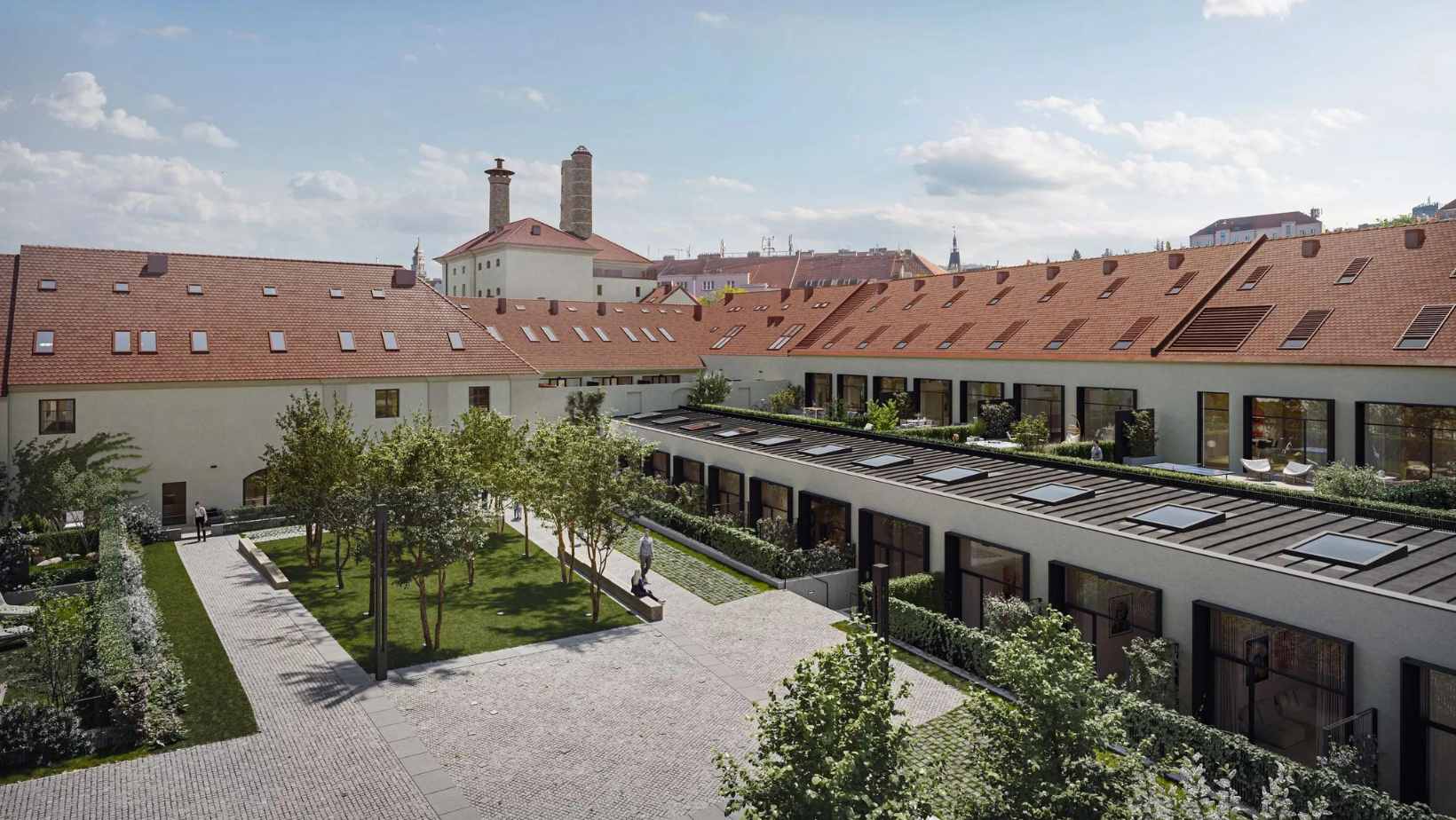
Once the reconstruction is finished, the development will offer apartments ranging from small studios to spacious lofts over 100 m². The ground floors will be home to retail spaces, including cafes, restaurants, and even a Czech Post office.
A key feature of the new district will be a small public square that connects the site to the surrounding area. A new footbridge over the Botič stream will link Nuselský Brewery with Křesomyslovová Street, providing better access for residents and visitors alike.
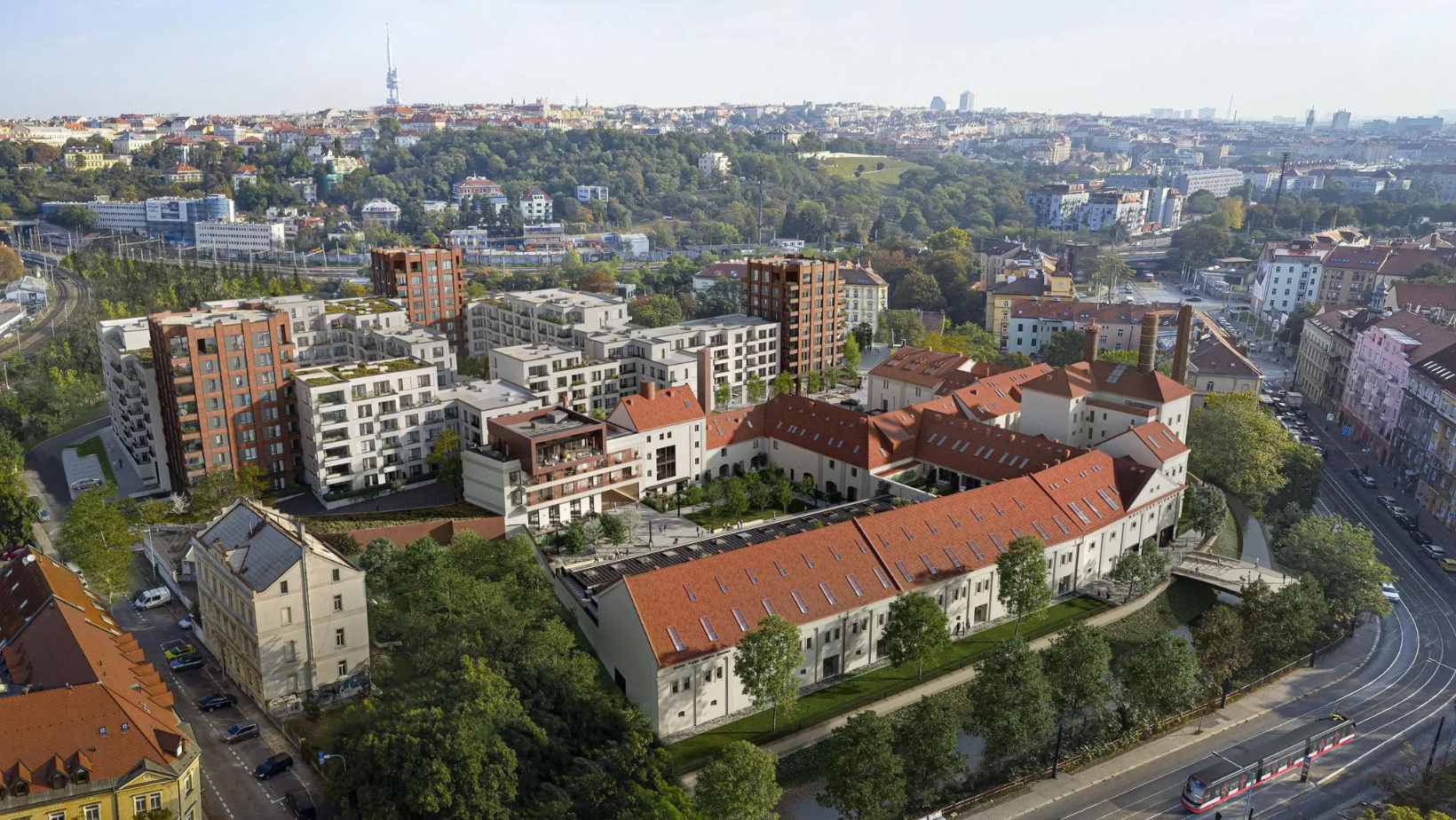
A Time Capsule Discovery
During the renovation, workers uncovered a remarkable piece of history: a time capsule from 1924, hidden in the facade of one of the buildings by a local mason.
The capsule contained documents detailing the cost of living in the early 20th century and records of cultural events, including a play.
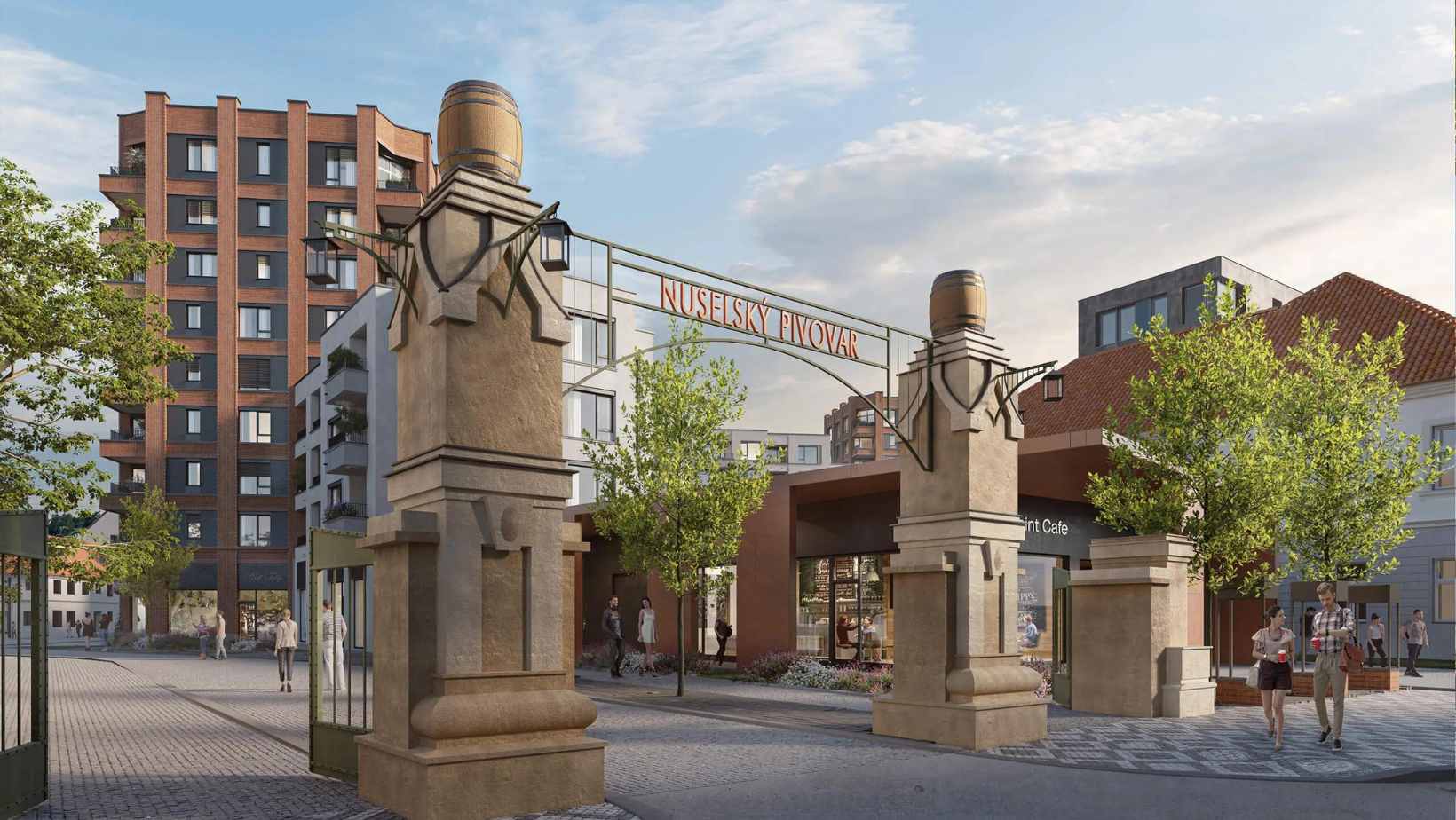
The total cost of the redevelopment exceeds one billion crowns, with Penta Real Estate, the project’s investor, aiming for completion by spring 2025.
Founded in 1694 by Count Jan Josef Sezima of Vrtba, the brewery became one of the largest industrial breweries in Central Europe during its heyday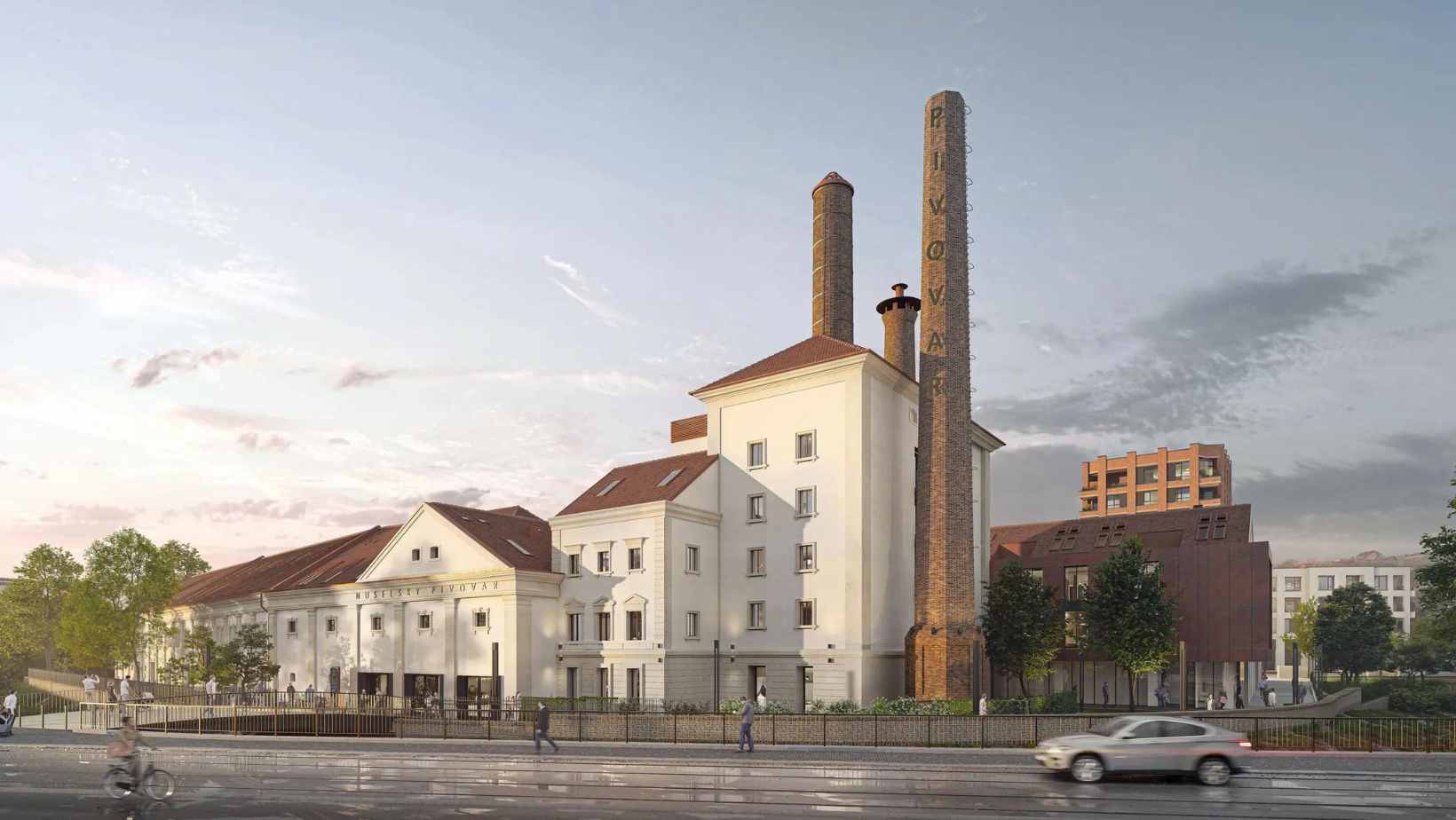
Beer production ceased in 1960, and the site was later used by the Czech Winery. Now, more than six decades later, the location is set to re-emerge as a vibrant part of Prague’s urban landscape.
Would you like us to write about your business? Find out more
No major changes are planned for Kampa Park. During a public meeting held on Thursday, October 3, local officials reassured attendees about the upcoming revitalization of this iconic park.
The event, attended by several dozen people—mainly residents of Malá Strana—featured Prague 1 Mayor Terezie Radoměřská (TOP 09) and architect Magdalena Kurfürstová, who provided insights into the project.
“I have good news for everyone: Kampa Park will not undergo any radical changes. There is no need to worry about sudden transformations,” assured Mayor Radoměřská.
The meeting marked the culmination of a months-long participation process, during which nearly 600 people shared their thoughts through interviews and surveys.
“The aim is to enhance Kampa Park in a way that benefits the residents of Prague 1, particularly the people of Malá Strana,” emphasized Radoměřská.
The mayor highlighted that while the participation process had its challenges, it was driven by the community’s genuine affection for the park.
Deputy Mayor Kateřina Klasnová noted that the majority of locals want Kampa Park to stay true to its current character. “It’s clear that most people love the park as it is. So, we’ll focus on enhancements rather than major changes,” said Klasnová.
Planned Upgrades
Based on feedback from the public, the revitalization will include new drinking fountains, additional seating, ornamental shrubs, and flower beds.
There will also be a pétanque court and repairs to the deteriorating railings along the Čertovka River and pathways throughout the park.
“We’re finalizing the proposal now and will soon discuss the budget,” Klasnová explained when asked about the next steps following the public consultation. If everything proceeds as expected, the park’s revitalization could begin in the summer or fall of 2025.
Would you like us to write about your business? Find out more
The Cake House is an innovative and modular home concept that was presented at the Designblok festival in Prague.
The project was founded by Matyáš Švejdík, Pavel Špringl, and Šimon Marek, and described as an “architectural recipe for modular wooden houses”.
The Cake House is intended to be a pitched-roof house that can be adapted and customized to the various needs of different people.
“The main idea of Cake Houses stands on the belief that if you come up with good basic space and construction principles, you can then plot variable and individual designs fast and reliably because of the standardization,” said Švejdík.
The overall shape of the house is maintained at all times, although, the length is personalized according to the customer’s needs. The Cake House utilizes an online configurator to try out hundreds of different layouts and internal and external finishes.
The design is then converted into a wooden construction built using prefabricated parts.
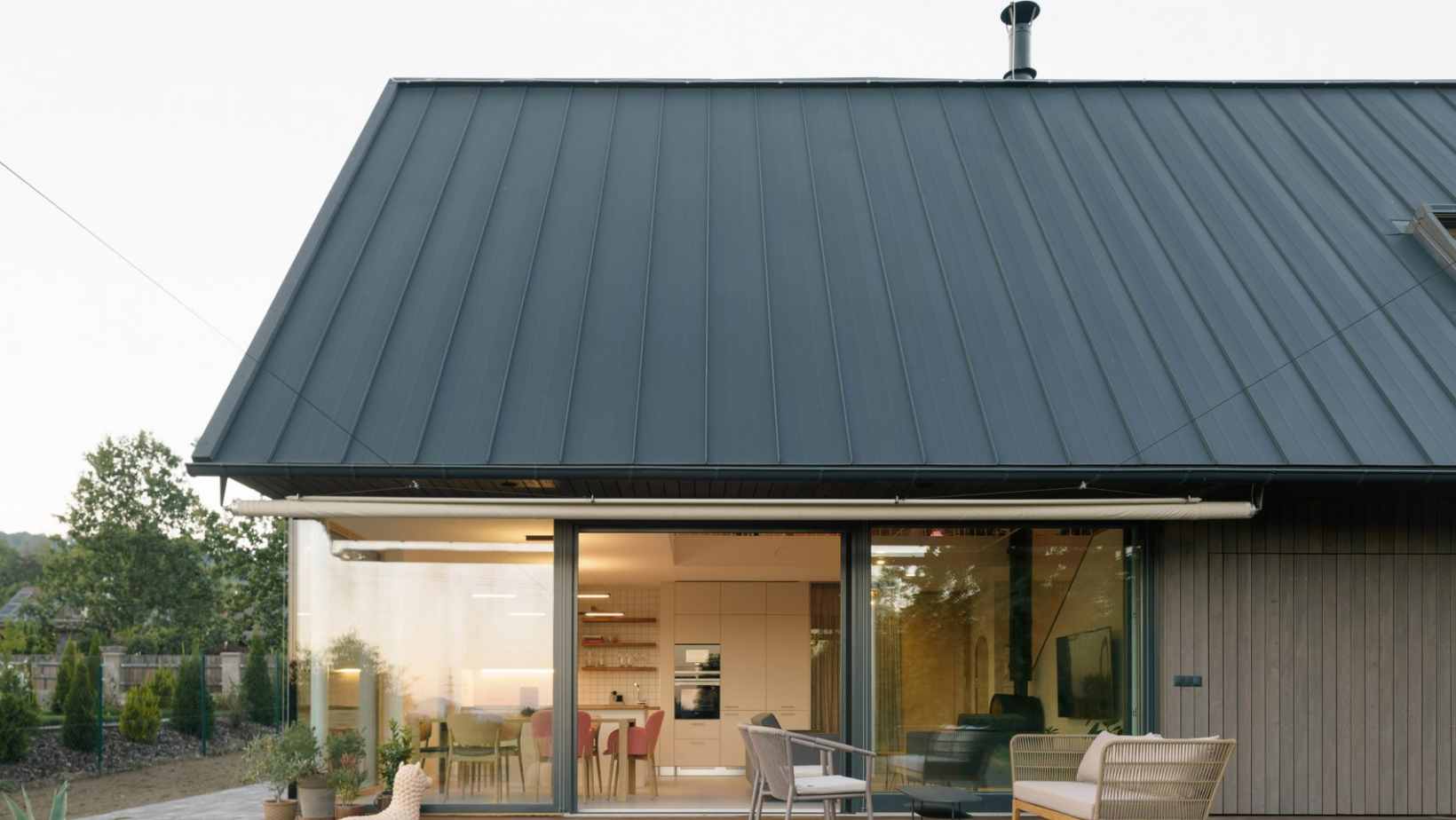
Currently, one Cake House has been built. It features a pitched roof and timber cladding which is seen in the Cake House design, this helps ensure that the home is affordable and economical.
Although certain design factors have been implemented such as avoiding long dark corridors and adding large windows that connect the interiors of the home to the garden.
“The mainstream look and overall design quality of family houses in the Czech Republic is mostly poor – the reason being the fact that these houses are catalog projects usually without identity and deeper creative thought,” Švejdík said.
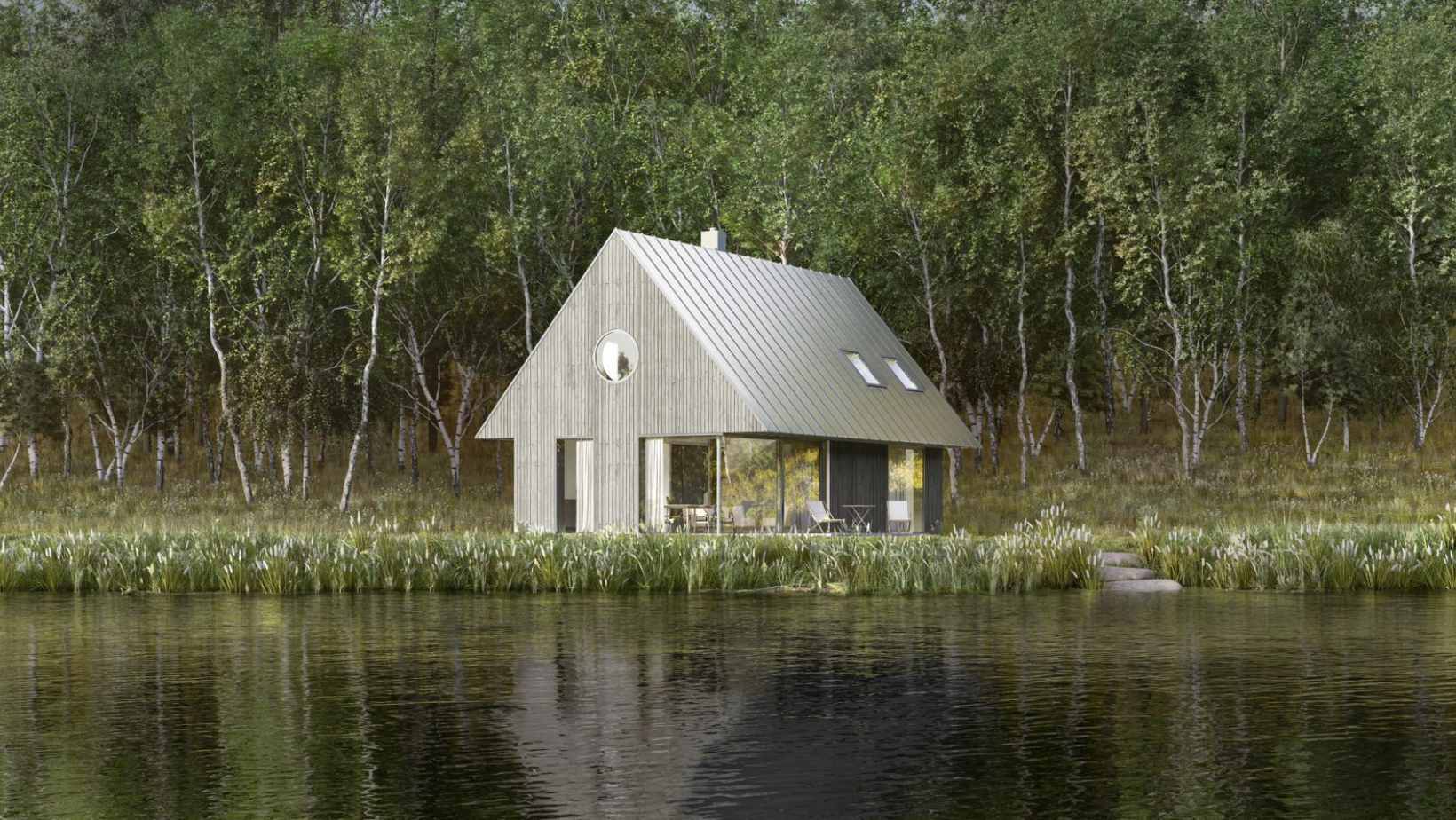
“But for most people, this way of building their home is easier, cheaper, and more certain than working with an architect on multiple levels,” he added. “We decided to design a project that brings the advantages of good architecture and standardization together.”
“We then came up with the basic principles of the construction and used our programming knowledge to create a system of assembling parts, and now we are able to create various configurations suitable for different people, families, or budgets.”
